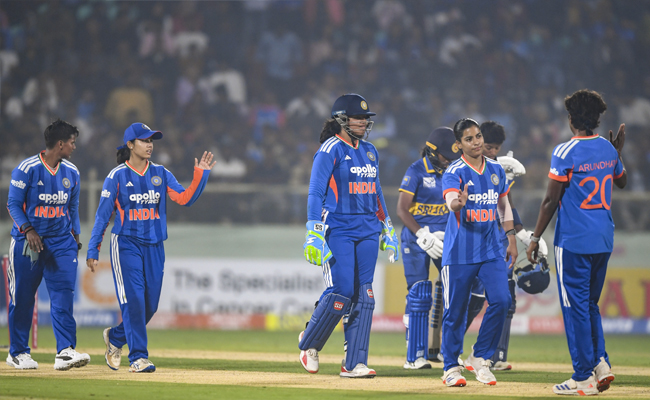Bengaluru (PTI): Prime Minister Narendra Modi will be in poll bound Karnataka's northern districts of Yadgiri and Kalaburagi on Thursday to lay foundation stone and inaugurate projects worth more than Rs 10,800 crores.
This will be the second such visit by the Prime Minister to Karnataka this month. He was in Hubballi on January 12 to inaugurate the National Youth Festival, during which he had held a massive road show.
According to an official release, at around 12 noon, in Kodekal, Yadgiri district, the Prime Minister will lay the foundation stone and inaugurate various developmental projects related to irrigation, drinking water besides a National Highway development project.
Later, at around 2:15 PM, Modi will reach Malkhed, Kalaburagi District, where he will distribute title deeds (hakku patra) to the eligible beneficiaries of newly declared revenue villages and also lay the foundation stone for a National Highway project.
The visit also gains significance, as the ruling BJP prepares for assembly polls in Karnataka and has set a target of winning a minimum of 150 out of total 224 seats which will go for polls by May.
Aimed at providing safe and adequate drinking water through individual household tap connections to all households, Modi will lay the foundation stone for Yadgir multi-village drinking water supply scheme under Jal Jeevan Mission at Kodekal in Yadgiri District, also a Water Treatment Plant of 117 MLD will be built under the scheme.
The project, which costs more than Rs 2,050 crore, will provide potable water to about 2.3 lakh households of more than 700 rural habitations and three towns of Yadgiri district.
During the programme, the PM will also inaugurate Narayanpur Left Bank Canal Extension Renovation and Modernisation Project (NLBC ERM).
The project, with a canal carrying capacity of 10,000 cusecs, can irrigate 4.5 lakh hectares of command area. It will benefit more than three lakh farmers in 560 villages of Kalaburgi, Yadagir and Vijaypur districts. The total cost of the project is about Rs 4,700 crores.
Later, he will also lay the foundation stone of the 65.5 km section of NH-150C. This 6-lane Greenfield road project is part of Surat Chennai Expressway. It is being built at a cost of about Rs 2,000 crore.
Further pointing out that about 1,475 unrecorded habitations have been declared as New Revenue villages in five districts of Kalaburagi, Yadgiri, Raichur, Bidar and Vijayapura, the release said, at Malkhed village of Sedam Taluka of Kalaburagi district, the Prime Minister will distribute title deeds (hakku patra) to the eligible beneficiaries of these newly declared revenue villages.
The issuance of title deeds to more than 50,000 beneficiaries, who are largely from the marginalised and vulnerable communities from the SC, ST and OBC, is a step to provide a formal recognition from the government for their land, and will make them eligible for receiving government services like drinking water, electricity, roads etc.
During the programme, the Prime Minister will also lay the foundation stone of the 71 km section of NH-150C. This 6 lane Greenfield road project is also part of Surat Chennai Expressway. It is being built at a cost of more than Rs 2,100 crore.
Surat Chennai Expressway will pass through six states- Gujarat, Maharashtra, Karnataka, Telangana, Andhra Pradesh, and Tamil Nadu. It will reduce the existing route from 1,600 Kms to 1,270 Kms.
The PM after finishing with his engagements in Karnataka will leave for Mumbai.
Let the Truth be known. If you read VB and like VB, please be a VB Supporter and Help us deliver the Truth to one and all.
Pilibhit (PTI): A 19-day-old elephant calf, brought from Bijnor, was placed under care at the Pilibhit Tiger Reserve (PTR) on Sunday, an official said and added that the calf got separated from its mother in the forest area of Bijnor.
The calf was born on December 2 in the Bijnor forest area and got separated from its mother shortly after birth, the official said.
The forest department made several attempts to reunite it with its mother, but without any success. To ensure the calf's safety and better care, it was decided to transfer it to the Pilibhit Tiger Reserve on the instructions of senior officials.
On Saturday, Deputy Director Manish Singh received the calf. Special arrangements have been made in the reserve for its care. It has been kept in a safe and clean environment to provide it with a natural setting and protect it from external noise and disturbances.
Singh told reporters that raising an 19-day-old calf is challenging.
It requires a special diet as a substitute for mother's milk and constant monitoring.
He said a special team has been formed to provide 24-hour care. Since the calf is very young, it is being cared for like a newborn baby.
According to Singh, the primary responsibility for monitoring the calf's health has been entrusted to PTR's veterinarian, Dr Daksh Gangwar. Under his supervision, a complete record of the calf's health checkups, diet, and body temperature is being maintained. The team is ensuring that the calf does not contract any infection.





